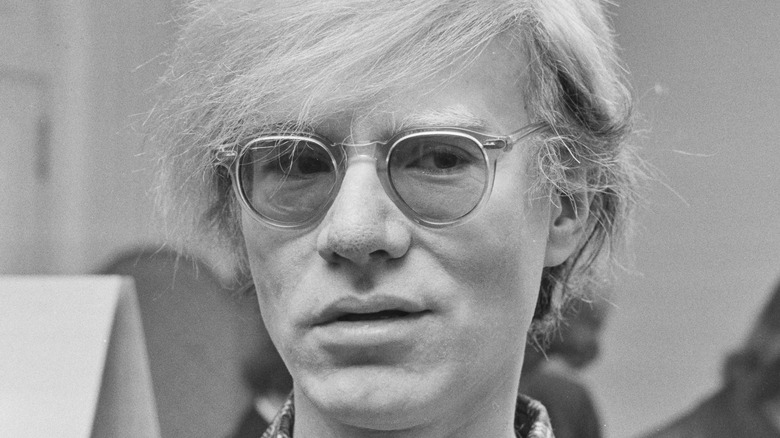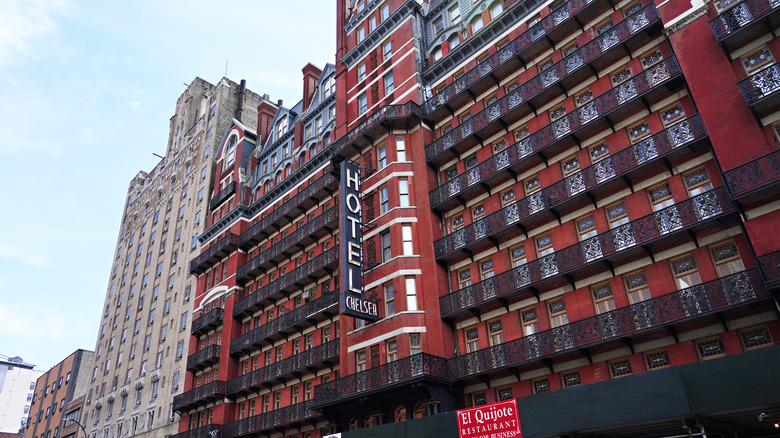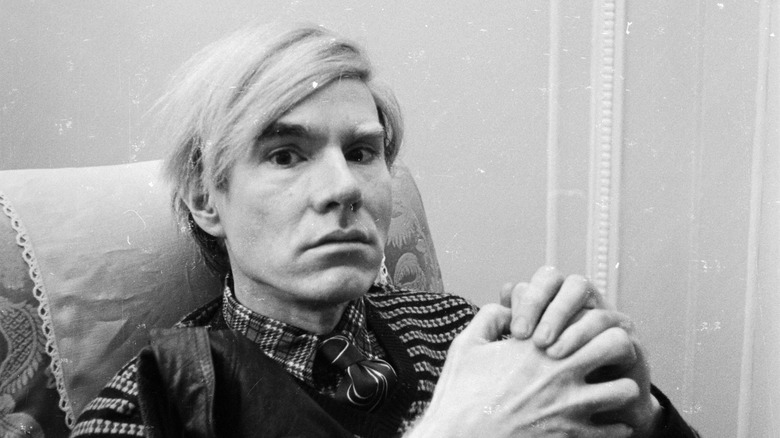Andy Warhol's Ties To The Famous Chelsea Hotel
Few buildings in the world are steeped in modern art history quite like the Chelsea Hotel. The gothic-styled building at 222 West 23rd Street in Manhattan first opened as one of the city's first co-op apartments. However, about 20 years later the apartment complex went bankrupt and was converted into a luxury hotel. The building had been designed with artists in mind, according to How Stuff Works, with Sherill Tippins, author of the book "Inside the Dream Palace: The Life and Times of New York's Legendary Chelsea Hotel," saying that to her knowledge that the Chelsea Hotel is "the largest and longest-lived artists' community in the history of the world."
The Hotel attracted scores of artists, musicians, and writers over the years. Mark Twain, O. Henry, Jimi Hendrix, Janis Joplin, Arthur C. Clarke, Stanley Kubrick, and Bob Dylan all spent some amount of time living at the Chelsea Hotel. Over time the hotel became known as the epicenter of the modern art movement in New York City. One of that scene's most famous artists, Andy Warhol, also spent some time at the Chelsea Hotel.
The art scene at the Chelsea Hotel
Artists moved into the Chelsea Hotel almost from the beginning. According to How Stuff Works, that was entirely the point. The building's architect Philip Hubert had specifically designed the building while keeping in mind the works of French philosopher Charles Fourier. Fourier's work involved ideas centered on what was deemed "intentional communities," places where collaboration and shared social values are front-of-mind.
Hubert's plan worked and the hotel drew artists from a variety of backgrounds who worked in all kinds of mediums and influenced each other's work. Andy Warhol became one of the most well-known artists of the pop art movement in the 1960s, and his work combined all kinds of different mediums. According to Biography, this included performance art, writing, video installations, and filmmaking.
Warhol's filmmaking is especially connected to the Chelsea Hotel. His 1966 film "Chelsea Girls" was partially filmed inside the hotel. According to The Andy Warhol Museum, the film provided a look at the New York City underbelly during that time. However, some later credited Warhol's work with changing the Chelsea Hotel through the 1960s and '70s, and, unfortunately, not for the better.
From inspiration to degredation
According to an oral history of the Chelsea Hotel published by Vanity Fair, some residents felt that the spotlight Warhol's work shined on the hotel changed its clientele. "That was the period in which the Chelsea Hotel began to take on a tabloid character," singer, songwriter, producer, and artist Bob Neuwirth said. "It moved from the realm of a bohemian hotel to a kind of hot spot. Rock 'n' roll people began to stay there. Andy Warhol and the people who hung out in the back room of Max's Kansas City were discovering the place."
Soon, the Chelsea Hotel became increasingly seedy, a shift that Warhol noticed himself. He wrote a journal entry about the hotel in the wake of one of the darkest moments in the Chelsea Hotel'shistory, the murder of Nancy Spungen, allegedly carried out by her boyfriend, Sid Vicious, bassist for the legendary punk band, the Sex Pistols.
Warhol wrote about seeing the news coverage of the murder and a quote from the hotel's manager Stanley Bard, who ran the Chelsea Hotel from 1964 to 2007 (via The New York TImes). "The police just arrested Sid Vicious for stabbing his 20-year-old manager-girlfriend to death in the Chelsea Hotel. I saw on the news that Mr. Bard was saying, 'Oh yeah. They drank a lot and they would come in late ... ' They just let anybody in over there, that hotel is dangerous, it seems like somebody's killed there once a week," Warhol wrote in his journal.


